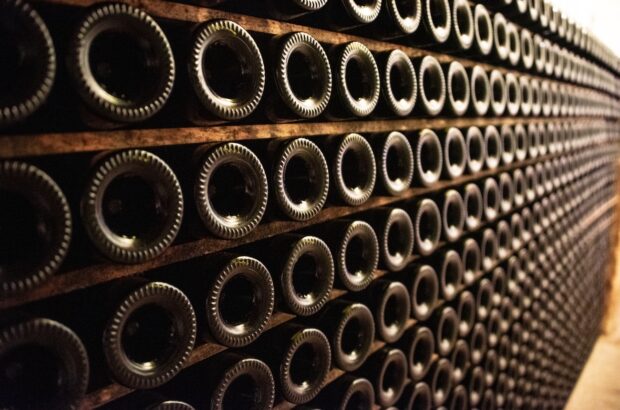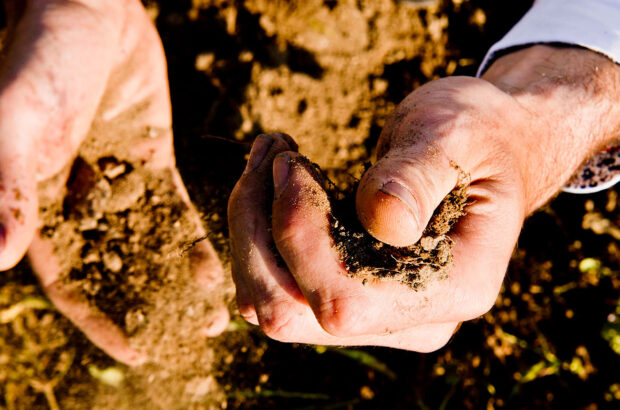Wine labels can be confusing when it comes to indicating how sweet a wine will taste. But help is at hand, as Matt Walls offers some useful pointers to help you navigate the space between sweet and dry...
It happens to us all once in a while. You open a bottle, take a sip, and instead of a dry wine, your tongue flags up an unexpected sweetness.
It’s rarely an issue with red wines, and fully sweet dessert wines are relatively easy to spot (smaller bottles, higher prices, usually merchandised separately), but some medium-dry and medium-sweet white wines can appear to the eye almost identical to their dry counterparts.
However, there are certain clues you can gather from grape variety, regional tradition or label terminology that can lead you in the right direction.
Scroll down for Walls’ top 15 suggestions to explore sweetness in wine
{"content":"PHA+QW5kIGJ5IOKAmHJpZ2h04oCZIGRpcmVjdGlvbiwgSSBkb27igJl0IG5lY2Vzc2FyaWx5IG1lYW4gdG93YXJkcyBhIGRyeSB3aW5lLjwvcD4KPHA+RHJ5bmVzcyBjYW4gbWlzdGFrZW5seSBiZSBzZWVuIGFzIGEgc2lnbiBvZiBzb3BoaXN0aWNhdGlvbiBvciBxdWFsaXR5LCBwZXJoYXBzIGJlY2F1c2UgbWFueSBtYXNzLW1hcmtldCB3aW5lcyBjb250YWluIHNvbWUgc3VnYXIuPC9wPgo8cD48ZGl2IGNsYXNzPSJhZC1jb250YWluZXIgYWQtY29udGFpbmVyLS1tb2JpbGUiPjxkaXYgaWQ9InBvc3QtaW5saW5lLTIiIGNsYXNzPSJpcGMtYWR2ZXJ0Ij48L2Rpdj48L2Rpdj48L3A+CjxwPkJ1dCBzd2VldG5lc3MgaXMgbm90aGluZyB0byBiZSB3YXJ5IG9mLiBPbiB0aGUgY29udHJhcnksIHRoZSBqdWRpY2lvdXMgd2l0aGhvbGRpbmcgb2YgcmVzaWR1YWwgc3VnYXIgZ2l2ZXMgd2luZW1ha2VycyBzY29wZSB0byBwbGF5IHdpdGggc3RydWN0dXJlLCBiYWxhbmNlIGFuZCBmbGF2b3VyLjwvcD4KPHA+Tm90IGFsbCBvZiB0aGUgZ3JlYXRlc3Qgd2luZXMgYXJlIGZ1bGx5IGRyeSBvciBmdWxseSBzd2VldC4gVGhlIHRyaWNreSBwYXJ0IGlzIGtub3dpbmcgd2hlbiBiZXN0IHRvIGRyaW5rIHRoZW0uRXhjZXB0IGZvciBzb21lIHJlZ2lvbmFsIGN1cmlvc2l0aWVzLCBzZW1pLXN3ZWV0IHdpbmVzIGFyZSB1c3VhbGx5IHByb2R1Y2VkIGluIGNvb2wtY2xpbWF0ZSByZWdpb25zLCBlc3BlY2lhbGx5IHRoZSA8YSBocmVmPSJodHRwczovL3d3dy5kZWNhbnRlci5jb20vd2luZS93aW5lLXJlZ2lvbnMvbG9pcmUvIiB0YXJnZXQ9Il9ibGFuayIgcmVsPSJub29wZW5lciI+TG9pcmU8L2E+LCA8YSBocmVmPSJodHRwczovL3d3dy5kZWNhbnRlci5jb20vd2luZS93aW5lLXJlZ2lvbnMvYWxzYWNlLyIgdGFyZ2V0PSJfYmxhbmsiIHJlbD0ibm9vcGVuZXIiPkFsc2FjZTwvYT4gYW5kIEdlcm1hbnkuPC9wPgo8cD5FaXRoZXIgdGhhdCwgb3IgdGhleeKAmXJlIG1hZGUgZWxzZXdoZXJlIHdpdGggYXNzb2NpYXRlZCBncmFwZSB2YXJpZXRpZXMuIEFuZCBubyBncmFwZSBpcyBtb3JlIGNsb3NlbHkgaW50ZXJ0d2luZWQgd2l0aCBzZW1pLXN3ZWV0IHN0eWxlcyB0aGFuIDxhIGhyZWY9Imh0dHBzOi8vd3d3LmRlY2FudGVyLmNvbS93aW5lL2dyYXBlLXZhcmlldGllcy9yaWVzbGluZy8iIHRhcmdldD0iX2JsYW5rIiByZWw9Im5vb3BlbmVyIj5SaWVzbGluZzwvYT4uPC9wPgo8ZGl2IGNsYXNzPSJhZC1jb250YWluZXIgYWQtY29udGFpbmVyLS1tb2JpbGUiPjxkaXYgaWQ9InBvc3QtaW5saW5lLTMiIGNsYXNzPSJpcGMtYWR2ZXJ0Ij48L2Rpdj48L2Rpdj4KPGhyPgo8aDM+PHN0cm9uZz5HZXJtYW55IGFuZCBSaWVzbGluZzwvc3Ryb25nPjwvaDM+CjxwPkV2ZW4gYSBnbGltcHNlIG9mIHRoZSB0cmFkaXRpb25hbCBHZXJtYW4gZmx1dGUtc2hhcGVkIGJvdHRsZSBjYW4gc3VnZ2VzdCBzd2VldG5lc3MuIEl04oCZcyB1bmRlcnN0YW5kYWJsZTogUmllc2xpbmcgcmV0YWlucyBhY2lkaXR5IGFzIGl0IHJpcGVucywgc28gYSBkZWdyZWUgb2YgbmF0dXJhbCB1bmZlcm1lbnRlZCBncmFwZSBzdWdhciBpbiB0aGUgd2luZSBpcyBmYWlybHkgY29tbW9uIHRvIGJyaW5nIGJhbGFuY2UuIEdlcm1hbnkgaGFzIGFsc28gc29tZXRpbWVzIHN0cnVnZ2xlZCB0byBmdWxseSByaXBlbiBpdHMgZ3JhcGVzLCBzbyBhIGxpdHRsZSBzd2VldG5lc3Mgd2FzIHByaXplZC48L3A+CjxwPkJ1dCB0YXN0ZXMgYXJlIGNoYW5naW5nLiBBY2NvcmRpbmcgdG8gU3RlZmZlbiBTY2hpbmRsZXIgb2YgdGhlIEdlcm1hbiBXaW5lIEluc3RpdHV0ZTog4oCYR2VybWFuIHdpbmUgaXMgZHJpZXIgdGhhbiBldmVyLiBUb2RheSwgYWxtb3N0IDcwJSBvZiBhbGwgd2luZSBwcm9kdWNlZCBpbiBHZXJtYW55IGlzIGRyeSBvciBzZW1pLWRyeS4gQmFjayBpbiB0aGUgMTk3MHMsIG1vcmUgdGhhbiB0d28tdGhpcmRzIHdlcmUgc3dlZXQu4oCZPC9wPgo8ZGl2IGNsYXNzPSJhZC1jb250YWluZXIgYWQtY29udGFpbmVyLS1tb2JpbGUiPjxkaXYgaWQ9InBvc3QtaW5saW5lLTQiIGNsYXNzPSJpcGMtYWR2ZXJ0Ij48L2Rpdj48L2Rpdj4KPHA+VGhlIG1vc3QgdXNlZnVsIHRlcm0gd2hlbiBpZGVudGlmeWluZyB3aGV0aGVyIGEgR2VybWFuIFJpZXNsaW5nIGlzIGRyeSBvciBub3QgaXMg4oCYdHJvY2tlbuKAmSwgbWVhbmluZyDigJhkcnnigJkuIFRoZSBpbXByZXNzaW9uIG9mIHN3ZWV0bmVzcyBpbiBhIHdpbmUgaXNu4oCZdCBqdXN0IGRvd24gdG8gcmVzaWR1YWwgc3VnYXIsIGl04oCZcyBhbHNvIGFmZmVjdGVkIGJ5IHRoZSBsZXZlbCBvZiBhY2lkaXR5LjwvcD4KPHA+U28sIGEgdHJvY2tlbiB3aW5lIGNhbiBoYXZlIHVwIHRvIGZvdXIgZ3JhbXMgcGVyIGxpdHJlIG9mIHJlc2lkdWFsIHN1Z2FyICg0Zy9sIFJTKSwgb3IgdXAgdG8gOWcvbCBSUyBwcm92aWRlZCB0aGF0IHRoZSB0b3RhbCBhY2lkaXR5IChUQSkgaXMgbm8gbGVzcyB0aGFuIDJnL2wgYmVsb3cgdGhlIGxldmVsIG9mIHJlc2lkdWFsIHN1Z2FyIChzbyBpZiBhIHdpbmUgaGFzIDlnL2wgUlMsIGl0IHdvdWxkIG5lZWQgYXQgbGVhc3QgN2cvbCBUQSkuIFRoZSB0ZXJtcyDigJhoYWxidHJvY2tlbuKAmSBhbmQg4oCYZmVpbmhlcmLigJkgbWVhbiBtZWRpdW0tZHJ5LiBCdXQgdXNhZ2Ugb2YgYW55IG9mIHRoZXNlIHRlcm1zIGlzIG5vdCBvYmxpZ2F0b3J5LjwvcD4KPGRpdiBjbGFzcz0iYWQtY29udGFpbmVyIGFkLWNvbnRhaW5lci0tbW9iaWxlIj48ZGl2IGlkPSJwb3N0LWlubGluZS01IiBjbGFzcz0iaXBjLWFkdmVydCI+PC9kaXY+PC9kaXY+CjxwPklmIG5vbmUgb2YgdGhlc2Ugd29yZHMgZmVhdHVyZSBvbiB0aGUgbGFiZWwsIGFub3RoZXIgd2F5IG9mIGNoZWNraW5nIGlzIGJ5IGxvb2tpbmcgZm9yIGFueSBHZXJtYW4gUHLDpGRpa2F0IHRlcm1pbm9sb2d5LiBQcsOkZGlrYXR3ZWluZSBpcyB0aGUgY2F0ZWdvcnkgb25jZSBjYWxsZWQgUW1QIG9yIFF1YWxpdMOkdHN3ZWluIG1pdCBQcsOkZGlrYXQg4oCTIHRoZSBoaWdoZXN0IGxldmVsIG9mIHdpbmUgcXVhbGl0eSBpbiBHZXJtYW55LiBJdOKAmXMgZWZmZWN0aXZlbHkgYSBzY2FsZSB0aGF0IHJlZmVycyB0byB0aGUg4oCYbXVzdCB3ZWlnaHTigJkgb2YgdGhlIGdyYXBlcyB1c2VkICh0aGVpciBkZWdyZWUgb2YgZmVybWVudGFibGUgc3VnYXJzIGJlZm9yZSBmZXJtZW50YXRpb24pIHJhdGhlciB0aGFuIHRoZSBzd2VldG5lc3Mgb2YgdGhlIGZpbmlzaGVkIHdpbmUuIEluIGFzY2VuZGluZyBvcmRlciBvZiBtdXN0IHdlaWdodDoga2FiaW5ldHQsIHNww6R0bGVzZSwgYXVzbGVzZSwgYmVlcmVuYXVzbGVzZSBhbmQgZWlzd2VpbiwgdHJvY2tlbmJlZXJlbmF1c2xlc2UuIFRoZSBsYXN0IGZvdXIgYXJlIG5vd2FkYXlzIGFsd2F5cyBzd2VldC4gS2FiaW5ldHQgYW5kIHNww6R0bGVzZSBjYW4gZ28gZWl0aGVyIHdheSwgYnV0IGFuIGFsY29ob2wgbGV2ZWwgb2YgMTIlIG9yIG1vcmUgd291bGQgc3VnZ2VzdCB0aGF0IGFsbCB0aGUgZmVybWVudGFibGUgc3VnYXJzIGhhdmUgdHVybmVkIHRvIGFsY29ob2wgYW5kIHRoZSB3aW5lIGlzIGRyeS4gVGhlIGZpbmFsIHRlcm0gKEkgcHJvbWlzZSkgd29ydGgga25vd2luZyBpcyBncm9zc2VzIGdld8OkY2hzIOKAkyBhIHByZXN0aWdlIGNhdGVnb3J5IG9mIEdlcm1hbiB3aW5lcyB0aGF0IGlzIGFsd2F5cyBkcnkuPC9wPgo8cD5BbGwgdGhpcyBHZXJtYW4gdGVybWlub2xvZ3kgaXMgbmVjZXNzYXJpbHkgdGVjaG5pY2FsIGFuZCBpcyByZWxhdGl2ZWx5IGNvbXBsZXggY29tcGFyZWQgdG8gb3RoZXIgcmVnaW9ucywgYnV0IGF0IGxlYXN0IGl0IGhlbHBzIHlvdSBtYWtlIGFuIGVkdWNhdGVkIGd1ZXNzLiBXaXRoIE5ldyBXb3JsZCBSaWVzbGluZ3MgeW91IGhhdmUgdG8gcmVseSBvbiBkZXNjcmlwdGlvbnMgb24gdGhlIGxhYmVsIG9yIGtub3cgdGhlIHByb2R1Y2VyLiBCdXQgZ2VuZXJhbGx5IHNwZWFraW5nIEF1c3RyYWxpYW4gUmllc2xpbmdzIGFyZSB1c3VhbGx5IGJvbmUgZHJ5OyBOZXcgWmVhbGFuZCBSaWVzbGluZ3MgYWxzbyB0ZW5kIHRvd2FyZHMgZHJ5bmVzcywgYnV0IHlvdSBjYW4gZmluZCBzb21lIGV4Y2VsbGVudCBtZWRpdW0tZHJ5IGFuZCBtZWRpdW0tc3dlZXQgZXhhbXBsZXMsIHN1Y2ggYXMgUGVnYXN1cyBCYXnigJlzIEJlbCBDYW50byBhbmQgQXJpYS48L3A+CjxkaXYgY2xhc3M9ImJyZWFrb3V0IHBhbGV0dGUtYSBwYW5lbCBwYW5lbC1kZWZhdWx0Ij48ZGl2IGNsYXNzPSJwYW5lbC1ib2R5Ij48ZGl2IGNsYXNzPSdicmVha291dC1jb250ZW50Jz48L3A+CjxoMz48c3Ryb25nPkJleW9uZCBzdWdhcjwvc3Ryb25nPjwvaDM+CjxwPlRoZSBpbXByZXNzaW9uIG9mIHN3ZWV0bmVzcyBpbiBhIHdpbmUgaXNu4oCZdCBqdXN0IGRvd24gdG8gaG93IG11Y2ggcmVzaWR1YWwgc3VnYXIgYW5kIGFjaWRpdHkgaXQgaGFzLiBUaGUgZm9sbG93aW5nIGxpc3Qgb2YgZmFjdG9ycyBjYW4gYWxzbyBwbGF5IGEgcm9sZTo8L3A+CjxwPjxzdHJvbmc+T2FrPC9zdHJvbmc+PC9wPgo8cD5BZ2VpbmcgaW4gY29udGFjdCB3aXRoIG9hayBjYW4gcmVsZWFzZSBzd2VldC10YXN0aW5nIGNvbXBvdW5kcyBpbnRvIHRoZSB3aW5lLiBJdCBjYW4gYWxzbyBpbXBhcnQgZmxhdm91cnMgdGhhdCBhcmUgYXNzb2NpYXRlZCB3aXRoIHN3ZWV0bmVzcywgc3VjaCBhcyBuYXR1cmFsbHkgb2NjdXJyaW5nIHZhbmlsbGluLCBvciBjYXJhbWVsIG9yIGNvZmZlZSBmbGF2b3VycyBwcm9kdWNlZCBmcm9tIHRvYXN0aW5nIHRoZSBvYWsgb3ZlciBhIGZsYW1lLjwvcD4KPHA+PHN0cm9uZz5SaXBlbmVzczwvc3Ryb25nPjwvcD4KPHA+VGhlIGZsYXZvdXJzIG9mIHZlcnkgcmlwZSBncmFwZXMg4oCTIG92ZXJyaXBlLCBqYW1teSBvciBkcmllZCBmcnVpdHMg4oCTIGNhbiBwcm9tcHQgdXMgdG8gdGhpbmsgb2YgdGhlIHN3ZWV0bmVzcyB0aGF0IHdvdWxkIHVzdWFsbHkgYWNjb21wYW55IHRoZXNlIGZsYXZvdXJzIGluIG5hdHVyZSwgZXZlbiBpZiB0aGUgd2luZSB3aGljaCBjb250YWlucyB0aGVzZSBmbGF2b3VycyBoYXMgYmVlbiBmZXJtZW50ZWQgdG8gZHJ5bmVzcy48L3A+CjxwPjxzdHJvbmc+QWxjb2hvbDwvc3Ryb25nPjwvcD4KPHA+QWxjb2hvbCBjYW4gdGFzdGUgc3dlZXQgKGFzIGNhbiBnbHljZXJvbCksIHNvIGEgd2luZSB3aXRoIGEgaGlnaCBhbGNvaG9sIGNvbnRlbnQgY2FuIHRhc3RlIHNsaWdodGx5IHN3ZWV0IGV2ZW4gaWYgaXQgY29udGFpbnMgcHJhY3RpY2FsbHkgbm8gcmVzaWR1YWwgc3VnYXIuPC9wPgo8cD48c3Ryb25nPlNlcnZpbmcgdGVtcGVyYXR1cmU8L3N0cm9uZz48L3A+CjxwPlRoZSBsb3dlciB0aGUgc2VydmluZyB0ZW1wZXJhdHVyZSwgdGhlIGxlc3Mgc2Vuc2l0aXZlIHRoZSBwYWxhdGUgaXMgdG8gc3dlZXRuZXNzLiBBIHZlcnkgc3dlZXQgd2luZSBjYW4gdGFzdGUgY2xveWluZyBhdCByb29tIHRlbXBlcmF0dXJlLCBidXQgbW9yZSByZWZyZXNoaW5nIGFuZCBkcmlua2FibGUgd2hlbiBjaGlsbGVkLjwvcD4KPC9kaXY+PGRpdiBjbGFzcz0nYnJlYWtvdXQtYnV0dG9ucyc+PGRpdiBjbGFzcz0ncm93Jz48L2Rpdj48L2Rpdj48L2Rpdj48L2Rpdj4KPGgzPjxzdHJvbmc+VGhlIHRyZWFzdXJlcyBvZiBBbHNhY2U8L3N0cm9uZz48L2gzPgo8cD5BbHNhY2UgaXMgYXJndWFibHkgdGhlIGdyZWF0ZXN0IHdoaXRlIHdpbmUgcmVnaW9uIGluIHRoZSB3b3JsZCwgYW5kIHRoaXMgaXMgaW4gcGFydCB0aGFua3MgdG8gdGhlIHdheSBpdCBoYXMgZW1icmFjZWQgc3dlZXRuZXNzIOKAkyBhIGtpbmQgb2YgdGhpcmQgZGltZW5zaW9uIHRoYXQgY2FuIG1ha2Ugb3RoZXIgd2luZSByZWdpb25zIGxvb2sgZmxhdCBpbiBjb21wYXJpc29uLiBCdXQgc3BlYWtpbmcgY29tbWVyY2lhbGx5LCBzdWdhciBpcyBhbHNvIGl0cyBncmVhdGVzdCB3ZWFrbmVzczsgd2l0aG91dCB0aGUgc2FtZSB0ZXJtaW5vbG9neSBhcyBHZXJtYW55LCBpdOKAmXMgZXZlbiBlYXNpZXIgdG8gYmUgY2F1Z2h0IG91dCBieSB1bmV4cGVjdGVkIHN3ZWV0bmVzcyBoZXJlIHRoYW4gb3ZlciB0aGUgYm9yZGVyLiBPcGVuaW5nIGEgc2VtaS1zd2VldCB3aW5lIHdoZW4geW914oCZcmUgZXhwZWN0aW5nIGEgZHJ5IG9uZSBuZWVkbuKAmXQgYmUgYSBiaWcgZGVhbCwgYnV0IG1vc3Qgb2YgdXMgaGF2ZSBhbiBpZGVhIG9mIHRoZSBzdHlsZSB3ZSBmZWVsIGxpa2UgZHJpbmtpbmcgYXQgYW55IGdpdmVuIHRpbWUuIFNvLCBmb3IgbWFueSwgaXTigJlzIGEgY2FzZSBvZiBvbmNlIGJpdHRlbiwgdHdpY2Ugc2h5LjwvcD4KPHA+VW51c3VhbGx5IGZvciBGcmFuY2UsIHRoZSBncmFwZSB2YXJpZXRpZXMgYXJlIHVzdWFsbHkgc3RhdGVkIG9uIHRoZSBsYWJlbDsgdGhleSBhcmUgeW91ciBmaXJzdCBjbHVlLiBQaW5vdCBCbGFuYywgU3lsdmFuZXIgYW5kIE11c2NhdCBhcmUgYWxtb3N0IGFsd2F5cyBkcnkuIFBpbm90IEdyaXMgYW5kIEdld3VyenRyYW1pbmVyIGFyZSB1c3VhbGx5IG9mZi1kcnkgYnV0IGNhbiBiZSBhbnl3aGVyZSBmcm9tIGRyeSB0byBtZWRpdW0tc3dlZXQgKGdyYW5kIGNydSBleGFtcGxlcyBhcmUgb2Z0ZW4gbW9yZSBub3RpY2VhYmx5IHN3ZWV0KS4gUmllc2xpbmcgaXMgdXN1YWxseSBkcnkg4oCTIGJ1dCBub3QgYWx3YXlzLiBTbyBob3cgY2FuIHlvdSB0ZWxsPzwvcD4KPHA+SXTigJlzIGluY3JlYXNpbmdseSBjb21tb24gdG8gc2VlIGEgc3dlZXRuZXNzIHNjYWxlIG9uIHRoZSBsYWJlbCwgZGVwaWN0ZWQgZWl0aGVyIGdyYXBoaWNhbGx5IG9yIG51bWVyaWNhbGx5LiBJdOKAmXMgaGVscGZ1bCBidXQgbm90IG1hbmRhdG9yeS4gSG93ZXZlciwgd2l0aGluIHRoZSBuZXh0IHllYXIgb3IgdHdvLCBpdOKAmXMgaGlnaGx5IGxpa2VseSB0aGF0IHByb2R1Y2VycyB3aWxsIGJlIG9ibGlnZWQgdG8gdXNlIOKAmHNlY+KAmSBvbiB0aGUgbGFiZWwgaWYgdGhlIHdpbmUgaXMgdGVjaG5pY2FsbHkgZHJ5LiDigJhWZW5kYW5nZSB0YXJkaXZl4oCZIGFuZCDigJhzw6lsZWN0aW9uIGRlIGdyYWlucyBub2JsZXPigJkgd2luZXMgYXJlIHJlbGlhYmx5IGZ1bGx5IHN3ZWV0LjwvcD4KPHA+QWxzYWNlIFJpZXNsaW5nIGhhcyBiZWVuIHJhcGlkbHkgZXZvbHZpbmcuIFRoZSB0cmFkaXRpb25hbCBzdHlsZSBoYXMgbG9uZyBiZWVuIGRyeSwgYnV0IGluIHRoZSAxOTkwcyB0aGVyZSB3YXMgYSB0cmVuZCB0b3dhcmRzIGEgc3dlZXRlciBleHByZXNzaW9uLiBUcmltYmFjaCBtYWtlcyBleGNsdXNpdmVseSBkcnkgUmllc2xpbmdzLCBhbmQgdGhleSBoYXZlIGFsd2F5cyBjaGFtcGlvbmVkIHRoZSBkcnkgc3R5bGUuIE93bmVyIEplYW4gVHJpbWJhY2ggc2F5czog4oCYSeKAmW0gaGFwcHkgdG8gc2F5IGZvciB0aGUgbGFzdCAxMCB5ZWFycyBtYW55IG9mIFt0aGUgcHJvZHVjZXJzXSB3aG8gZmVsbCBpbnRvIHN3ZWV0bmVzcyDigJMgYSBzb3J0IG9mIGZhbHNlIHJpY2huZXNzIOKAkyBhcmUgYmFjayB0byBkcnluZXNzIGFnYWluLuKAmTwvcD4KPHA+QnV0IHRvIHRhc3RlIHRoZSBSaWVzbGluZ3Mgb2YgYW4gZXN0YXRlIHN1Y2ggYXMgRG9tYWluZSBSb2xseSBHYXNzbWFubiwgd2hvc2Ugd2luZXMgYWxsIGhhdmUgc29tZSBkZWdyZWUgb2YgcmVzaWR1YWwgc3dlZXRuZXNzLCBkZW1vbnN0cmF0ZXMgdGhhdCBtZWRpdW0tZHJ5IEFsc2FjZSBSaWVzbGluZyBjYW4gYmUgY29tcGVsbGluZ2x5IGRlbGljaW91cy4gUGllcnJlIEdhc3NtYW5uIGV4cGxhaW5zIHRoYXQgdGhlcmXigJlzIG5vIGluZGljYXRpb24gYXMgdG8gc3dlZXRuZXNzIG9uIGhpcyBsYWJlbHMgYmVjYXVzZSBoaXMgd2luZXMgYXJlIG1hZGUgd2l0aCBsb25nIGFnZWluZyBpbiBtaW5kLCBhbmQgYXMgd2luZXMgbWF0dXJlLCB0aGUgc2Vuc2F0aW9uIG9mIHN3ZWV0bmVzcyBncmFkdWFsbHkgZmFkZXMuPC9wPgo8cD5HZXd1cnp0cmFtaW5lciBpcyBub3cgZ3Jvd24gYXJvdW5kIHRoZSB3b3JsZCwgYW5kIG91dHNpZGUgQWxzYWNlIGl04oCZcyB1c3VhbGx5IGRyeS4gUGlub3QgR3JpcyBpcyBqdXN0IGFzIHdpZGVzcHJlYWQsIGFuZCB0aG91Z2ggbm9ybWFsbHkgZHJ5LCBpdCBvZnRlbiBkZW5vdGVzIGEgcmljaGVyIHN0eWxlIHRoYW4gd2hlbiB0aGUgZ3JhcGUgaXMgbGFiZWxsZWQgUGlub3QgR3JpZ2lvLjwvcD4KPGhyPgo8aDM+PHN0cm9uZz5DaGVuaW4gQmxhbmMgYW5kIHRoZSBMb2lyZTwvc3Ryb25nPjwvaDM+CjxwPjxhIGhyZWY9Imh0dHBzOi8vd3d3LmRlY2FudGVyLmNvbS93aW5lL2dyYXBlLXZhcmlldGllcy9jaGVuaW4tYmxhbmMvIiB0YXJnZXQ9Il9ibGFuayIgcmVsPSJub29wZW5lciI+Q2hlbmluIEJsYW5jPC9hPiBpcyBhbm90aGVyIGdyYXBlIHRoYXQgcmV0YWlucyBpdHMgYWNpZGl0eSBhcyBpdCByaXBlbnMsIHNvIHdpbmVtYWtlcnMgY2FuIHBsYXkgd2l0aCBhIHJhbmdlIG9mIHN3ZWV0bmVzcyBsZXZlbHMgaW4gYSBzaW1pbGFyIHdheSB0byBSaWVzbGluZy4gSXRzIGhlYXJ0bGFuZCBpcyB0aGUgTWlkZGxlIExvaXJlIHJlZ2lvbiBpbiBub3J0aGVybiBGcmFuY2UsIGFuZCBhbHRob3VnaCBhIG51bWJlciBvZiBhcHBlbGxhdGlvbnMgc3VjaCBhcyBBbmpvdSBhbmQgZXZlbiBTYXZlbm5pw6hyZXMgbWFrZSBhIHRpbnkgYW1vdW50IG9mIHNlbWktc3dlZXQgQ2hlbmluIEJsYW5jLCBpdHMgZ3JlYXRlc3QgZXhwb25lbnRzIGFyZSB0aGUgYXBwZWxsYXRpb25zIG9mIFZvdXZyYXkgYW5kIE1vbnRsb3Vpcy1zdXItTG9pcmUuPC9wPgo8cD5JdOKAmXMgb2JsaWdhdG9yeSBmb3IgdGhlaXIgZHJ5IHdpbmVzIHRvIGRpc3BsYXkgdGhlIHdvcmQg4oCYc2Vj4oCZIG9uIHRoZSBsYWJlbDsgaXQgaXMgbWVhc3VyZWQgaW4gYSBzaW1pbGFyIHdheSB0byBob3cgdHJvY2tlbiB3aW5lcyBhcmUgbWVhc3VyZWQgaW4gR2VybWFueS4gRm9yIHN3ZWV0ZXIgd2luZXMsIHRoZXJlIGlzIGEgc2xpZGluZyBzY2FsZSB1cHdhcmRzIGZyb20gc2VjLCB0byBzZWMgdGVuZHJlLCB0byBkZW1pLXNlYyB0byBtb2VsbGV1eCwgYnV0IHRoZXNlIGFyZW7igJl0IGxlZ2FsbHkgZGVmaW5lZCBhbmQgYXJlIHVzZWQgYXQgdGhlIHByb2R1Y2Vy4oCZcyBkaXNjcmV0aW9uLiDigJhMaXF1b3JldXjigJkgYW5kIOKAmHPDqWxlY3Rpb24gZGUgZ3JhaW5zIG5vYmxlc+KAmSBpbmRpY2F0ZSBmdWxseSBzd2VldCB3aW5lcy48L3A+CjxkaXYgY2xhc3M9ImluamVjdGlvbiI+PC9kaXY+CjxwPlBoaWxpcHBlIEZvcmVhdSBvZiBEb21haW5lIGR1IENsb3MgTmF1ZGluIG1ha2VzIFZvdXZyYXlzIG9mIHZhcnlpbmcgc3dlZXRuZXNzLiBIZSBzZWVzIG1vcmUgZGVtYW5kIGZvciBkcnkgc3R5bGVzIGZyb20gcmVzdGF1cmFudHMsIHdoaWxlIGhvbWUgZHJpbmtlcnMgYnV5IGFjcm9zcyB0aGUgYm9hcmQuIERyeSBzdHlsZXMgYXJlIHRoZSBlYXNpZXN0IHRvIG1hdGNoIHdpdGggZm9vZCwgYnV0IGRlbWktc2VjIGNhbiB3b3JrIGJyaWxsaWFudGx5IHdpdGggc2F2b3VyeSBkaXNoZXMgdG9vLCBwYXJ0aWN1bGFybHkgd2l0aCB3aGl0ZSBtZWF0cywgcmljaCBzYXVjZXMgb3Igc3Ryb25nIHNwaWNpbmcuIE1vZWxsZXV4IHdpbmVzIGFyZSBvZnRlbiBiZXN0IGRydW5rIGFsb25lLCBiZWZvcmUgb3IgYWZ0ZXIgYSBtZWFsLiBCdXQgaXTigJlzIHRoZXNlIHN3ZWV0ZXIgc3R5bGVzIHRoYXQsIGFjY29yZGluZyB0byBTYXJhaCBId2FuZyBvZiBEb21haW5lIEh1ZXQsIOKAmGJlc3QgcmFkaWF0ZSB0aGUgaGVhcnQgYW5kIHNvdWzigJkgb2YgaGVyIGRvbWFpbmUg4oCYYW5kIGNhcnJ5IG9uIHRoZSB3aW5lbWFraW5nIHRyYWRpdGlvbnMgb2YgVm91dnJheeKAmS48L3A+CjxwPkluIHllYXJzIHRvIGNvbWUsIHdlIG1heSB3b25kZXIgd2h5IHNvIG1hbnkgb2YgdGhlIHdpbmVzIHdlIGRyYW5rIHdlcmUgaHVkZGxlZCBhdCB0aGUgb3RoZXIgZW5kIG9mIHRoZSBzcGVjdHJ1bS48L3A+Cjxocj4KPHA+Cg=="}
See Walls’ top 15 suggestions to explore sweetness in wine
{}
{"wineId":"24385","displayCase":"standard","paywall":true}
{"wineId":"24386","displayCase":"standard","paywall":true}
{"wineId":"24387","displayCase":"standard","paywall":true}
{"wineId":"24388","displayCase":"standard","paywall":true}
{"wineId":"24389","displayCase":"standard","paywall":true}
{"wineId":"24390","displayCase":"standard","paywall":true}
{"wineId":"24391","displayCase":"standard","paywall":true}
{"wineId":"24392","displayCase":"standard","paywall":true}
{"wineId":"24393","displayCase":"standard","paywall":true}
{"wineId":"24394","displayCase":"standard","paywall":true}
{"wineId":"24395","displayCase":"standard","paywall":true}
{"wineId":"23022","displayCase":"standard","paywall":true}
{"wineId":"24396","displayCase":"standard","paywall":true}
{"wineId":"24397","displayCase":"standard","paywall":true}
{"wineId":"24398","displayCase":"standard","paywall":true}
{}
You might also like:












